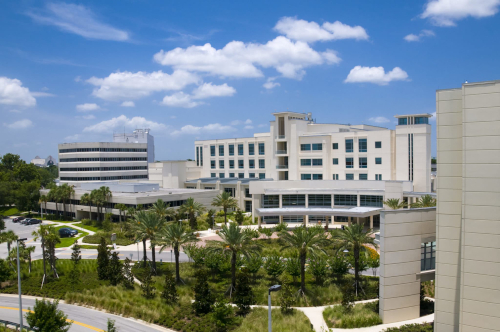Talkaphone Case Study – Carolina’s Health Care System

Executive Summary
Hospitals are centers of healing and wellness. At a destination for those who have suffered injury or violence elsewhere, we would like to take for granted our safety and security. However, recent surveys show a steady increase in assaults and violent acts over the past several years.
According to the 2011 government Census of Fatal Occupational Injuries (CFO), there was a 23% increase in reported attacks and assaults over the past year of the census. Additionally, the census reports that patient and visiting family violence has increased by nearly 34% over the same time. Each year there are nearly 3000 assaults on hospital staff alone, with many more going unreported. The sad truth is that many hospitals and healthcare facilities are seeing a fast-growing need for increased security.
Despite this established demand, hospital security departments around the country have seen little to no change in their budgets and have been forced to find creative solutions to enhance security. Many hospitals have identified security communications as a key underdeveloped component of their overall security plan. During emergencies, patients, staff, and general visitors sometimes find it difficult to get in touch with emergency services in a timely manner. Faster response time can lead to a safer environment and decrease the chances of a situation getting out of control.
Therefore, acting within the limitations of budgetary constraints, many hospitals have installed blue light emergency phones throughout their campuses. While security personnel is limited to patrolling only one or two areas at a time, emergency phones act as a force multiplier, allowing dispatchers to quickly send patrols and staff to targeted areas in need of immediate assistance.
Security Solutions
In order to prevent crime and violence in medical centers, it’s also critical to combat the misconception that emergency assistance is instantly available anywhere and everywhere. The widespread use of cell phones and the availability of internet access points have convinced some that they can always get an emergency response when needed.
However, this notion is contradicted by recent statistics. The reality is that we run into situations every day that separate us from immediate contact with others. Some examples can be the loss of cell phone reception, a dead battery, not knowing a specific phone number, or not knowing your exact location. An unexpected situation can occur at any moment and the ability to contact others, especially during an emergency, can be harder than expected.
It’s situations like this that concerned Adam Adcock of Carolinas HealthCare System. Mr. Adcock, a Systems Engineer and Project Manager for the healthcare system’s Physical Security department, wanted to address these communication concerns with an easy and reliable response. With the help of Stan Black and Alan Weeks of SAF Technologies, Adam and his team installed sixteen of Talkaphone’s blue light emergency phones across several parking decks at the Carolinas HealthCare System – NorthEast Hospital. Mr. Adcock said, “We wanted to install a solution which we knew would operate without error, each and every time.” He added, “We also appreciated the easy maintenance and high availability of replacement parts when required.” The Carolinas HealthCare System – NorthEast Hospital is a 457-bed acute-care hospital located in Concord, North Carolina. With over 4,200 employees and thousands of patients at risk, an improvement to the facility’s communication capabilities was needed.
How Talkaphone Helped
The sixteen Talkaphone blue light emergency phones are coupled with an LED blue light assembly. When activated, the LED blue light grabs the attention of nearby individuals, notifying them of an urgent situation. The LED blue light also acts as a beacon for officers and security personnel responding to the call. Additionally, the placement of the emergency phones and their active blue lights act as a deterrence to crime. The lights create a visible border and “safe zones” that patrons and criminals both know will quickly muster a response from security.
The emergency phones provide a direct line of communication to the hospital’s security department. As stated previously, in an emergency it isn’t always a given that an individual will have a phone or even the phone number to security. An emergency situation may be too hectic and an individual may not know their exact location. For some, the use of their hands may be needed in helping another, or in more dire situations, be needed to defend themselves.
One benefit of the blue light emergency phones is that once the phone is activated it automatically dials to the hospital’s security dispatch center. Mr. Adcock said, “Our telecom team programs ring down lines specific for each station, including a location-specific caller ID. Once a button is pushed, our Security Communications center receives the call, gathers information and dispatches an appropriate officer response.” He added, “We encourage our patients and staff to use the stations for anything from a need for assistance to true emergency situations. In some parking decks, mobile phone coverage can be spotty, so Talkaphone has become a consistent source for reaching help.” To activate a phone, a user simply has to press the bright red “Emergency” button on the front of the unit. A dispatcher or member of security will answer the phone and start assisting the individual/individuals in need.
While most of the emergency phone stations are deployed in parking decks and lots, others are deployed in stairwells inside the hospital as a means of providing an alternative Area of Refuge. An Area of Refuge is a location designed to hold and gather occupants during an emergency.
At many other hospitals and similar facilities, upgrading emergency phones means entirely replacing existing devices–and updating infrastructure–often at great expense. Fortunately for Mr. Adcock and his colleagues, the blue light emergency phones offer a solution. Each blue light emergency phone is capable of integrating with a variety of other security devices, allowing the units to be upgraded and downgraded over a long period of time. Recently, each blue light emergency phone has been integrated with cameras supplied by Talkaphone. These cameras provide surveillance before, during, and after an activation.
During activation, the security dispatch controller can assess a situation via the camera and relay detailed information to responders. Such information can be extremely valuable for responders and patrons. For example, a dispatcher may identify, through a unit’s camera, that an individual is hostile. The dispatcher could then tell responders to use caution when arriving on the scene.
Another example could be a dispatcher instructing responders to bring extra equipment to a scene. Responders can then bring the necessary equipment with them immediately, so there is no lag time between a responder’s arrival and they’re getting the equipment they need. Ultimately, the cameras allow for greater flexibility and an improved response. Dispatchers and responders can react to activations more efficiently and patrons can get an improved response to their emergency. Mr. Adcock added, “Talkaphone stations are easy to use and program. Operation is flawless and we’re happy with its ease of use and proven reliability.”
The emergency phones have been at the hospital for nearly ten years. As the hospital’s facilities grow, so does the presence of the phones. In order to maintain and operate these phones the hospital’s security personnel test each station at the beginning of the month.
Talkaphone’s reliability, flexibility, and adaptable solutions have made a difference to all those involved at Carolinas HealthCare System – NorthEast Hospital. With the hospital’s security department connected more than ever to the patrons and staff that frequent the hospital, Mr. Adcock hopes that interaction between them can become more commonplace. As the number of emergency phones expands, the need to use them will decrease. Individuals will become more aware and responsible knowing that an extra line of communication is there for them. Mr. Adcock will make sure that patients, staff, and visitors alike will have quick and easy communication from the time they enter the hospital’s premises to the time they leave.
This article originally appeared in the Security Products Magazine Sept. 2013 issue, by Samuel Shanes.
WSS Integrated Technologies is a proud partner of Talkaphone.
- The Role of Continuous Monitoring and Analysis in Intrusion Detection - September 6, 2024
- Understanding Crucial Terms and Technologies in Fire Alarm Systems - August 30, 2024
- The Anatomy of a Fire Alarm System: Essential Components for Complete Protection - August 23, 2024
